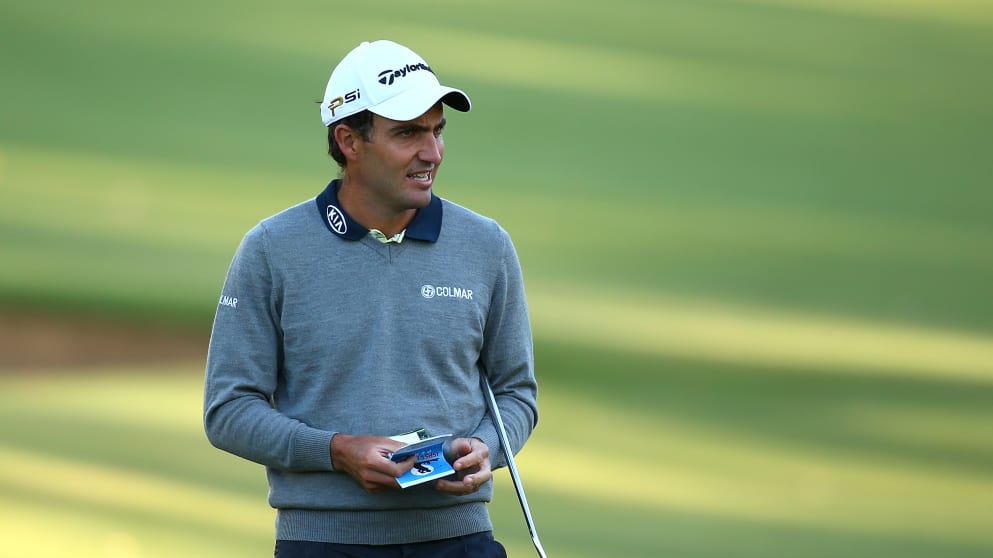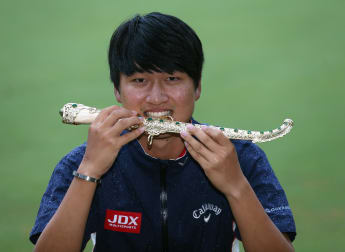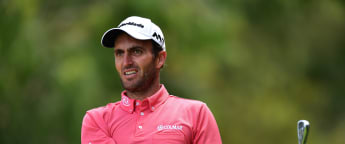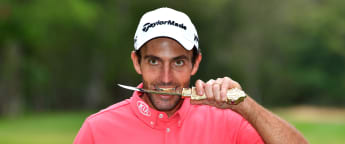Whilst he prepares to try and defend his Trophee Hassan II title in Morocco, Italy's Edoardo Molinari sat down to write this week's Player Blog. A self-confessed statistics enthusiast, Molinari was one of the first players on Tour to collect and measure his stats. In his blog, he discusses the thinking behind that, examples of how stats have helped him, what stats amateurs should measure and what he sees for the future of golf analytics.

I first began tracking my stats back in 2001 when I was still an amateur. It was little bit for fun, a little bit to see what I could see in my game and also so I could assess what I needed to improve to take my game to the next level.
From there, I began studying engineering and I developed my own custom software to collect and measure my stats. I would spend five to ten minutes after each round going through each shot and noting the lie, the distance, the club, the result and then input that into the software. Each week I would maybe spend a little time after the tournament looking at the data and trying to create some conclusions on what I had done well and what let me down. Then every three months or so, I will spend a couple of hours doing an assessment of my stats and create a program for practicing and playing the next few weeks that is based on what I’ve been doing recently.
A few years ago now I met Professor Mark Broadie, the creator of the Strokes Gained statistics. We sat down together and he explained his reasoning and his process for creating Strokes Gained and it made a lot of sense to me. I was able to incorporate his formula into my software and beginning looking at my own Strokes Gained analytics, really before any other players were doing that. I now have a huge database of all my numbers from through the years and can track which parts of my game are improving, which perhaps need some attention and generally use the data to help shape the way I play and practice.
Strokes Gained has really changed the way professional golf is measured. Before, we could look at number of different numbers from our rounds but they were only the tip of the iceberg, they did not show which shots were costing you strokes, or vice-versa which specific shots led to the biggest gains. Previously I might have looked at a round and tried to assess if I had performed well or badly, now I’m able to break that down shot-by-shot, and take a look at how I compare to other players based on one specific shot or situation. That’s pretty powerful.
Best book in my library! Big thanks to Professor Mark Broadie for your research and your help with my game! #genius pic.twitter.com/6kjBWQqcsS
— Edoardo Molinari (@DodoMolinari) March 5, 2014
Ten years ago, if you walked out on the range, you would see people practicing but they were pretty much just hitting balls and getting loose. Today, you’ll see rows of Trackman radars and coaches, with players trying to get the most out of the practice they are doing. Tweaking numbers or shots to try and find those marginal gains that will help them score better. Not everyone out here on Tour is tracking and analysing their stats, but if they aren’t you can bet their coach is and using it to help with whatever they are working.
There’s a lot of clichés in golfand in amateur golf about how to improve and how to spend your time practicing. Phrases like “drive for show, putt for dough” are considered acceptable but with Mark’s work and the amount of data we now collect, the truth may be the opposite. For years, people thought the difference between a pro and an amateur was short game and putting. However, if you look at the numbers it tells a very different story.
For example, if an amateur wanted to take on a European Tour player for a bet, he would have a better chance of winning over a nine-hole competition on the putting green than a nine-hole tee shot challenge.
Whilst the data and statistics in golf are improving vastly, we are still a long way behind other sports. Just look at the way sports like baseball, football or Formula One are measured and shown on TV and you’ll see we are maybe still years behind. However, that gap is shrinking and as a sport we are improving and constantly looking for ways to improve.
In golf, the margins are so, so small. One inch on a putt, or one degree on a drive can make a huge difference to your performance and your score. Improving by half a shot per round could be the difference between finishing your year battling for your card or playing in Dubai in the season-ending event, it’s that small.
How you use the data is crucial. It’s easy to get overwhelmed by looking at your game as a whole. It’s important to look at specific parts of your game or shots and see how they can help you improve. For example if I know that, off the tee, numbers show that I rarely miss the ball to the left, if I’m playing a hole with out-of-bounds on the left I know I can probably hit driver and not worry. It’s information like that, those sort of scenarios, that will help a Tour player pick up shots.
A few years ago I realised that I was hitting the ball closer from 80 to 100 yards than I was from 40 to 60 yards. The difference was about 3.5 feet. That data informed me of where I should leave the ball on par fives or on short par fours. Hitting a lay-up to 90 yards is going to be easier than hitting it to 50 yards, and if you hit closer from that distance anyway, you can manage your game better to give yourself a shorter putt for birdie. That’s just one example of how I put what I measure into practice during rounds.
Whilst amateurs don’t have access to the same information or tools as we do, there are a few things they can do to improve. I tell players I play with in Pro-Ams if you measured just two stats, you would quickly learn where and how you need to improve. Firstly, counting the number of tee shots you hit that find trouble and prevent you from going for the green. Secondly, how many greens in regulation are you hitting each round. If you measure those two stats, it will help you get the ball in play more effectively off the tee and then help you see how often you are giving yourself putts for birdie.
As for the future of golf stats, I see numbers helping pros create more effective strategies for courses. I think players will use historical data, both from their own games and from the courses they are playing, to inform them about the best club to hit off the tee, or the best side of the fairway to hit, or which flags they can go at and which they need to hit away from. Rather than using analytics as a post-round measuring tool, I think players will see value in using it to better prepare and map out what they want to do before they go out on the course.







